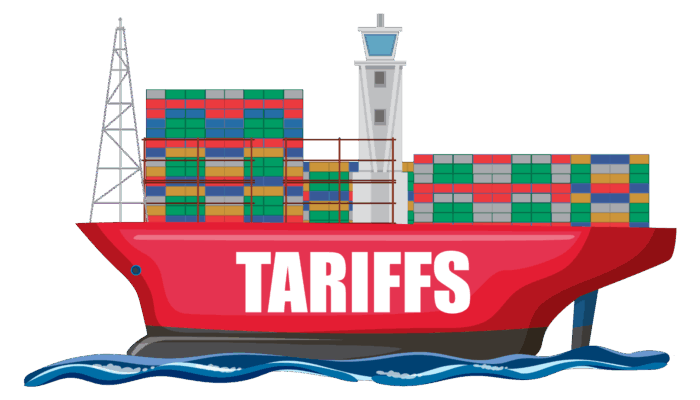Friction in the shopping experience is everywhere. There are too many unnecessary obstacles to making browsing and buying easy and delightful. Typing your credit card info into a smartphone comes to mind. Even worse is when you click the Buy button only to discover the item is out of stock. Friction is as bad for retailers as it is for customers because it reduces conversion rates. Here are five examples of commerce friction that can be eliminated with the right Order Management System (OMS).
1. An order gets placed—then canceled
A customer sees an item on your website, clicks on the Buy button, only to receive an automated email moments later that the item is out of stock. You have to cancel the online order. And now it’s time for a refund. Not only have you lost a sale, you’ve probably lost a customer’s loyalty as well. What went wrong?
Perhaps the item was available in one of your stores while the online order was being placed. Someone in the store bought the last item yesterday but the lag in reporting showed that it was still available. In this case, your orders aren’t getting consolidated onto a single platform in real time.
One of the core capabilities of an OMS is bringing in sales from every channel so they can be managed easily in one system. With the right OMS, you can capture the purchase data and cross-reference it against inventory in real time. That way, the order never goes through if the item isn’t available. Whether purchases happen in-store, online or through your app, sales data is presented in a single interface—where business logic can prevent unavailable items from even appearing on your channels. Key to this capability is global inventory visibility, which brings us to our next example of friction.
2. Your customer is ready to buy at your local store but can’t tell if an item is available
As we’ve discussed before, since the pandemic there’s been a surge in Buy Online Pick Up in Store (BOPIS) and curbside pickup. Or, if you’re a luxury retailer, you might refer to this as Reserve and Collect/Click & Collect. The fact is, today’s customers frequently do their shopping online before heading to the store to retrieve their purchases. To make this experience frictionless, customers need confidence that an item showing as in stock at their local store is in fact available. This is where the need for global inventory visibility provided by an OMS comes in.
The problem many retailers face is that inventory data is frequently siloed in the organization. The POS may contain store inventory while the WMS has accurate warehouse inventory. The ERP may get updates from those systems, but they’re often out of sync. ERPs aren’t designed to handle real-time inventory queries. An OMS, however, is purpose-built to consume inventory updates at scale. By syncing all of your ecommerce orders and stock allocations, you can prevent stockouts from happening. You can surface the number of items available at a particular store to the customer while they’re on the PDP. The right OMS can even turn a stockout into a sale by showing the customer where the item is available, if not at the nearest store.
3. Your BOPIS/Click & Collect customer wants to know when their purchase is available for pickup
In addition to showing what items are available for sale, an OMS can tell you where and when that item is available for pickup. Streamlining picking, packing and warehouse activity is one of the benefits of a purpose-built OMS. By managing all of these activities through a single interface, the OMS can direct your picking team to the item’s location, whether it’s on a shelf in a warehouse or in your store’s stock room. It can then reflect the status of each location change so you’ll always know where the item is in the journey from stock to fulfillment. The benefit to the customer is immediate. Knowing when goods are available and in the hands of a store associate will improve their shopping journey. And increase brand loyalty.
4. Your customer needs to know that pickup will be easy
Because time and personal safety are so precious to today’s customers, you need to ensure that there is minimal friction to each of those concerns. For curbside pickup, this means knowing when and where to meet the store associate to receive your items. Is there a street-facing stock room where they’ll pick up their purchases? Or maybe a designated area of the parking lot where your associates will load purchases into customers’ trunks? If a customer arrives for pickup without detailed instructions, they’ll have to go inside your store, which defeats the purpose. Smart retailers are communicating with their BOPIS and curbside customers via SMS. This real-time conversation allows the customer to retrieve purchases with confidence. With the right OMS, your associates and customers can know where items are at all times—even for the last leg of fulfillment from store shelf to car trunk.
5. Your customer wants to know when their order will be delivered
All of the points made above apply equally when orders are shipped to customers’ homes. The added wrinkle with shipping is the need to integrate with your carriers’ workflow systems. Today’s carrier options are greater than ever. In addition to the international carriers like FedEx, UPS and DHL, there are now myriad regional carriers that can offer better pricing and delivery options. There are also carrier aggregators, brands that manage their own fleets, and even crowd-sourced delivery services for urban areas.
Each of these, however, is only as successful as the systems communicating inventory location and status. For this, you need an OMS that easily integrates with all of your carriers’ systems. The key to easy integration is to work with a cloud-based OMS. Cloud-based software offers increased flexibility and scalability, making it easy to integrate with other systems, even monolithic enterprise solutions. Of course, there are many other benefits to leveraging cloud-based software. Instead of purchasing expensive systems and equipment for your business, you can reduce your costs by using the resources of your cloud-based software provider. You can even reduce your operating costs because you don’t have to pay for system upgrades or hardware.
Conclusion
As we’ve seen, friction can occur in many places during the shopping journey. By accurately communicating what is in stock, where it is available and when, you build trust with your customers. If your stock availability is transparent throughout the journey, customers will purchase with confidence. Make your first step on the journey to frictionless commerce a cloud-based Order Management System that can support this kind of inventory transparency.
For more information on how Fluent Order Management can help you provide a frictionless commerce experience, request a demo today.




